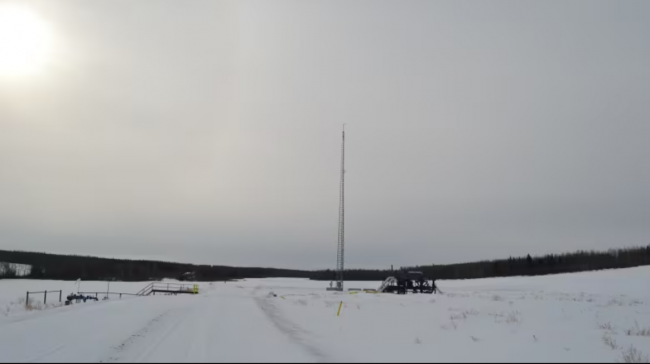Articles Menu

FOR IMMEDIATE RELEASE:
May 3, 2024
Sierra Club BC calls for a pause on new fossil fuel projects as they threaten provincial, national and global climate goals
VANCOUVER/UNCEDED xʷməθkʷəy̓əm (MUSQUEAM), Sḵwx̱wú7mesh (SQUAMISH) AND səlilwətaɬ (TSLEIL-WAUTUTH) TERRITORIES – Sierra Club BC is very concerned about new federal climate pollution data released on May 2, which shows 2022 provincial greenhouse gas emissions grew to 64 million tonnes of carbon dioxide, representing an increase of 3.4 percent compared to 2021. B.C.’s 2022 emissions were also slightly higher than those in 2019, the year before the Covid-19 pandemic caused a temporary reduction in pollution levels.
More concerning, according to the new federal Greenhouse Gas Inventory, B.C.’s 2022 emissions were also higher than those in 2007, B.C.’s baseline year. The new data shows the province is drastically behind on its goal to reduce emissions by 40 percent by 2030. Provincial emissions would now need to be reduced by more than 5 percent per year to meet this goal. The task will be even harder if new LNG terminals that are proposed or under construction go into operation.
“The new data shows that CleanBC and other climate policies are not yet resulting in the necessary pollution reductions,” said Jens Wieting, Senior Policy and Science Advisor at Sierra Club BC. “Recent global warming trends and intensifying climate impacts, like the 2023 wildfires, mean that we need effective climate action at a faster pace. The good news is that the world agreed to transition away from fossil fuels at the last UN climate summit and we are seeing record-breaking growth in renewable energy. Now we need the courage to stop new fossil fuel projects before locking in more pollution.”
New LNG projects and increased fracking in B.C. will undermine efforts currently underway to reduce emissions in other sectors of the provincial economy. The B.C. government has set a target to reduce emissions from the oil and gas sector to about 9 million tonnes by 2030 but will not meet this goal if planned LNG facilities are built. According to modelling by the Pembina Institute, Phase 1 of LNG Canada, a fracked gas export facility under construction in Kitimat which is expected to start operations in 2025, Woodfibre LNG, and existing oil and gas production combined could generate close to 17 million tonnes of pollution by 2030. If the other four LNG projects under discussion go ahead, pollution would reach more than 30 million tonnes.
In addition to emissions from fracking, pipelines, and liquefaction in B.C., burning exported LNG will increase emissions in other countries. This is the main reason why climate scientists consider gas reserves in B.C.’s Northeast as one of the planet’s biggest potential ‘carbon bombs’ (defined as projects that will generate over 1 billion tonnes of GHG emissions during their lifetimes).
In March, the B.C. government announced that it will not follow through on its original plan to implement an oil and gas emissions cap in 2024. Instead, the government will assess in 2025 whether a provincial cap is needed and if so, would enact one in 2026. This will depend on the federal government’s progress towards a federal cap.
“We understand that the provincial government is under pressure to keep supporting new fossil fuel projects. But recent trends show that we are approaching tipping points in energy and climate systems. If provincial and federal governments need more time to finalize effective oil and gas emissions caps, they need to introduce a temporary pause on all new fossil fuel projects like the Biden administration did for new LNG projects in the U.S. This interim action is indispensable if we are to have a fighting chance of meeting our climate targets.”
-30-
Background:
The federal inventory data on B.C. and B.C.’s own data (currently only available up to 2021) are difficult to compare because they count emissions in slightly different ways, resulting in different sets of numbers (e.g. the federal data shows B.C.’s 2007 emissions as 62.2 million tonnes, and B.C.’s own data shows them as 63.8 million tonnes).
The federal data is important for the province because it becomes available months earlier and shows a trend. B.C.’s emissions are back to pre-pandemic levels and close to the level of our baseline year (2007). Time is running out to meet our ambitious 2030, 2040 and 2050 targets, and new fossil fuel projects and drastically growing pollution caused by climate impacts like wildfires threaten to undermine good steps in the right direction.
Media contact:
Jens Wieting, Senior Policy and Science Advisor | Sierra Club BC
jens@sierraclub.bc.ca
Shelley Luce, Director of Campaigns | Sierra Club BC
shelley@sierraclub.bc.ca
[Top photo: A natural gas well pad in northeastern B.C.'s Peace region, over the Montney Play, a shale gas formation. (Tara Carman/CBC)]